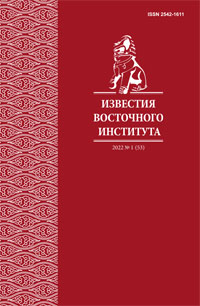Ruins in the Post-Soviet Far East: "Creative Destruction" or "Slow Violence"?
DOI:
https://doi.org/10.24866/2542-1611/2022-1/78-90Keywords:
Russian Far East, post-Soviet period, ruins, authoritarian modernization, slow violence, survival practicesAbstract
The authors investigate the mechanisms of the emergence of ruins in the Russian Far East in the late XX – early XXI centuries. If the destruction of Soviet enterprises can to a certain extent be explained by the transformational crisis and "creative destruction", then the degradation of the technical and social infrastructure is interpreted within the framework of the theory of authoritarian modernization. In addition, the article analyzes the long-term consequences of the lives of people in ghettoized settlements, among the ruins, using the ethnography of "slow violence". The authors are introduced into scientific circulation such historical sources as field research materials and works of art of Far Eastern writers and artists. These sources clearly show how local residents survive among the physical ruins on the ruins of their plans and hopes in the peripheral territories of this region.




